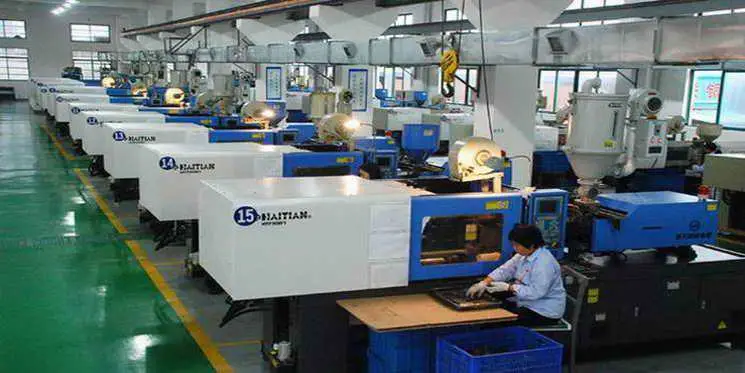What are the causes of dark bubbles in plastic products and how should plastic manufacturers eliminate them?
(1) Defect characteristics
The main manifestation of dark bubbles in Plastic Products is that during the plastic manufacturing process, dark bubbles are formed inside the plastic product, which are also called vacuum bubbles.
(2) Reasons for defect generation and elimination methods
The reason why plastic parts have dark bubbles: because the melt solidifies during cooling, due to the different cooling speeds inside and outside, it is often that the outer layer solidifies first, while the inside is still in the molten state, and once the center cools and shrinks, since the outer layer has solidified, this time a vacuum hole will be formed inside the plastic part to form a dark bubble. The specific analysis is as follows.
1) Injection mold
(1) If the mold used by the plastic manufacturer is a straight sprue, after the plastic part is pressure-holding, the pressure in the cavity is higher than the pressure in front of the sprue. If the melt at the straight sprue is not solidified at this time, melt backflow will occur, causing dark bubbles in the plastic part. Therefore, straight sprues should be avoided.
(2) If the area of the sprue used by the injection molding manufacturer is too small, or the position is incorrect, it is easy to cause dark bubbles. For this, the cross-sectional area and position of the sprue should be adjusted.
(3) If the sprue position of the mold used by the plastic factory is not set at the thick wall, dark bubbles are likely to appear. For this reason, the sprue should be set at the thick wall of the plastic part.
2) Plastic molding process
(1) If the mold temperature is low, when the melt enters the mold, the outer layer of the plastic part will solidify first, and the center part that shrinks later will cause dark bubbles due to shrinkage. For this, the mold temperature should be appropriately increased.
(2) If the melt temperature is too high, the plastic part will shrink excessively during cooling and solidification, which will form dark bubbles. For this, the melt temperature should be reduced.
(3) If the holding pressure is not enough, the melt entering the cavity will flow back, causing dark bubbles. For this, the holding pressure should be increased.
(4) If the injection time is too short, the melt entering the cavity is not dense enough, which is easy to cause excessive shrinkage and dark bubbles. For this, the injection time should be extended.
3) Plastic part
(1) If the wall thickness is too different, it is easy to generate dark bubbles. For this, the plastic part process design should be changed to make it uniform in thickness.
(2) If there are special thick parts on the plastic part, dark bubbles are easy to form at this place. For this, the structural dimensions of the plastic part should be corrected.
4) Raw materials
(1) Some resins have a large shrinkage rate, and this resin is more likely to have dark bubbles. For this, it is necessary to select resins with a small shrinkage rate as much as possible.
(2) If the regrind is added too much, the shrinkage rate of the melt will increase, which is easy to form dark bubbles. For this, the amount of regrind should be appropriately reduced.






